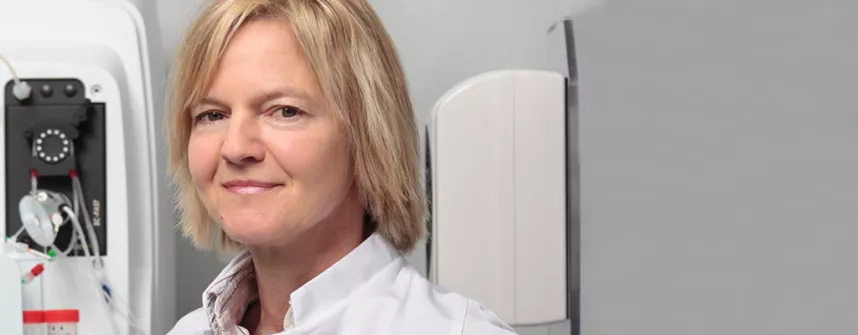Underwater volcanoes spew out hot fluids at 300 degrees Celsius; the vicinity is swarming with life and full of valuable ores of copper, gold, and zinc: For Andrea Koschinsky, the Kermadec Arc, a submarine mountain chain north of New Zealand, is one of the most exciting regions in the world. At the end of the year, the Professor of Geochemistry at Jacobs University will again take off for the Pacific, as chief scientist of an interdisciplinary research project.
Black smoke rises up from the ocean floor, an aggressive brew full of minerals, which form smoking chimneys made of ore or rain down upon the seabed. Smoke on the floor of the ocean? It is a quenching reaction to a hot underground source of circulation, explains Andrea Koschinsky. Cold water seeps into the underground areas, is heated by magma, leaches minerals from the rocks, rises again, mixes with the cold water of the sea, and becomes visible as a plume of smoke.
“When you see how this 300 degree solution shoots out of the sea floor, how the whole area is burgeoning with life under these extreme conditions, that is really spectacular,” says the scientist. She is no less fascinated by the diversity of the region. In the Pacific Kermadec Arc, undersea volcanoes are lined up shoulder to shoulder. Sometimes they produce sulphur-rich solutions, sometimes fluids particularly rich in gases. Each kind feeds other forms of life.
It is not the spectacle that is taking her to the other side of the world for the umpteenth time. It is about understanding and about the benefits. How does the interaction work between the living underwater biotopes, the hot springs, and the minerals? How far do the trace metals spread, which are responsible, for example, for the growth of plankton? And what is their significance in the global element balance of the oceans?
And there are valuable raw materials, such as copper, iron, even silver and gold. In what concentration are they found? Can they be mined without damaging the environment? Deep-sea mining is a topic of high priority, according to Koschinsky. A Canadian-Australian company is expected to begin the world's first undersea mining project off Papua New Guinea in the coming year; Germany has two licenses for preparation of the mining of metal-rich minerals in the deep sea.
Shortly before Christmas, Andrea Koschinsky will strike out for New Caledonia with the research ship “Sonne” (German for “sun”). But she already has a lot to do. For example, the head of the joint project with six German partner institutes, two New Zealand groups, and one scientist from the USA has to get work visas. On board she will head the scientific work and is the contact person for the captain. In water depths between 200 and 1600 meters, the deep-sea robot “Quest” will take samples. The research voyage will be followed by a multi-year analysis phase – lots of fodder for the coming doctoral, master, or bachelor theses of her students. One of the bachelor students is fortunate enough to go along on the five-week trip, along with two of her collaborators.
It is about the fifteenth expedition of the maritime researcher; she doesn't have the exact number in her head. She has already sailed the Pacific, Indian, and Atlantic Ocean. It all resulted from her first research trip, which also led her to the Pacific at the start of the 1990s as a doctoral researcher at TU Clausthal. “That event shaped me. Back then there was still no Internet out there; for six weeks we were nearly completely cut off from the outside world.”
This was followed by a post-doctoral degree and teaching as a private lecturer at FU Berlin, before coming to Jacobs University in 2003, where she joined Professor Michael Bau in establishing the Department of Geosciences, which has won many awards in various university rankings. “At Jacobs University I found the ideal place for me, with a great team, very good international students, and an extraordinary research environment. We cooperate closely with the University of Bremen, the Alfred Wegener Institute, and the Max Planck Institute for Marine Microbiology.”
Nowadays, the scientist herself is rarely in the lab. She is kept busy with the preparation and coordination of research projects, analysis, publication of scientific results, committee work, and teaching. Asked what she is looking forward to during this academic year, she names the Festival of Saint Barbara, the patron saint of miners. The celebration will be held by the students shortly before Christmas; on that occasion, they often poke fun at the teachers. Her relationship with the young people is close, often lasting beyond the end of their studies.
And she is looking forward to the start of the term. “It is always exciting to work together with students from many countries, to create a team with them.” On the 1st of September, the first day of the new semester at Jacobs University, Professor Andrea Koschinsky held her first lecture at 8:15 a.m. The topic: environmental geoscience. It deals with materials in the environment, what damage they can do – and how to remediate it.
